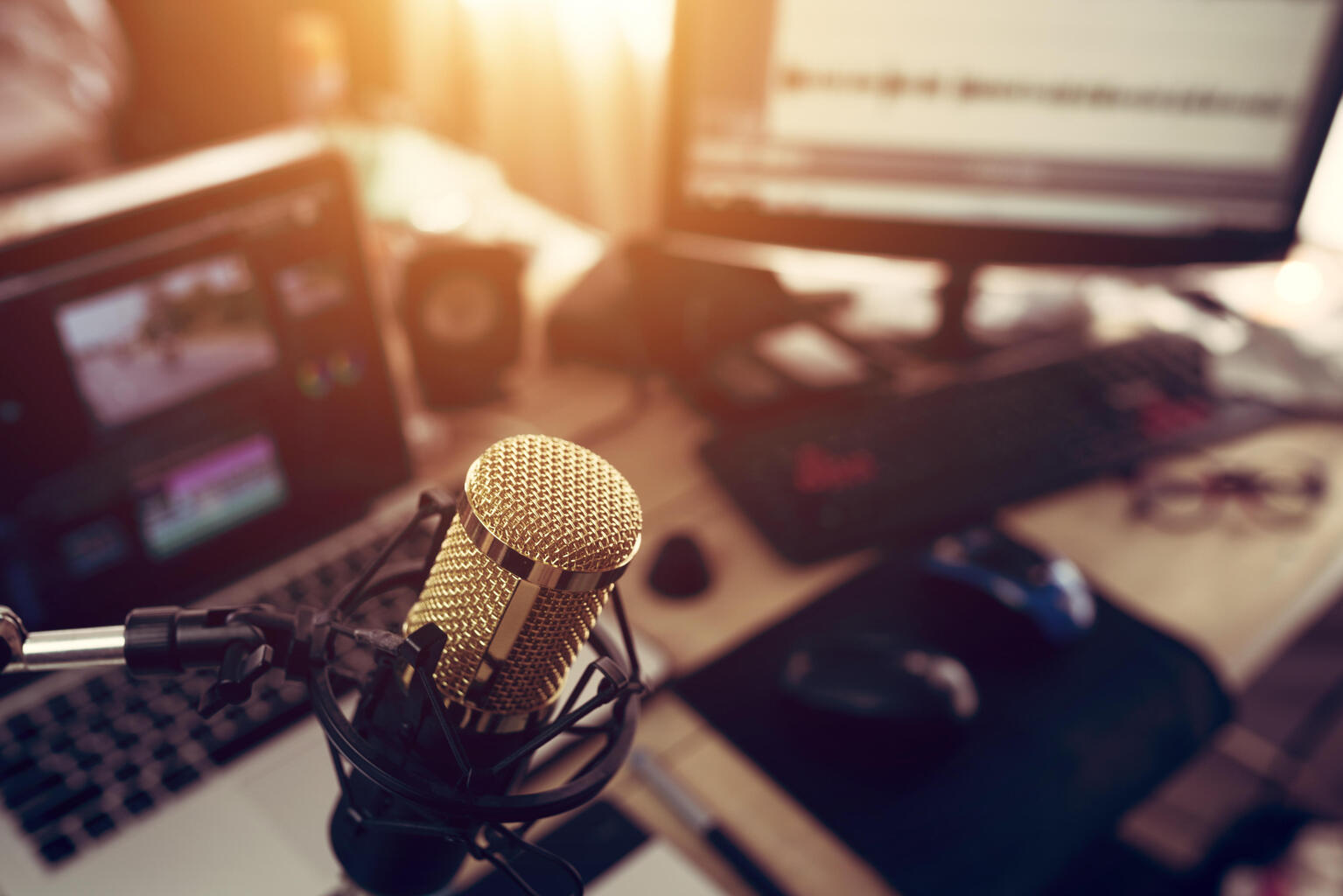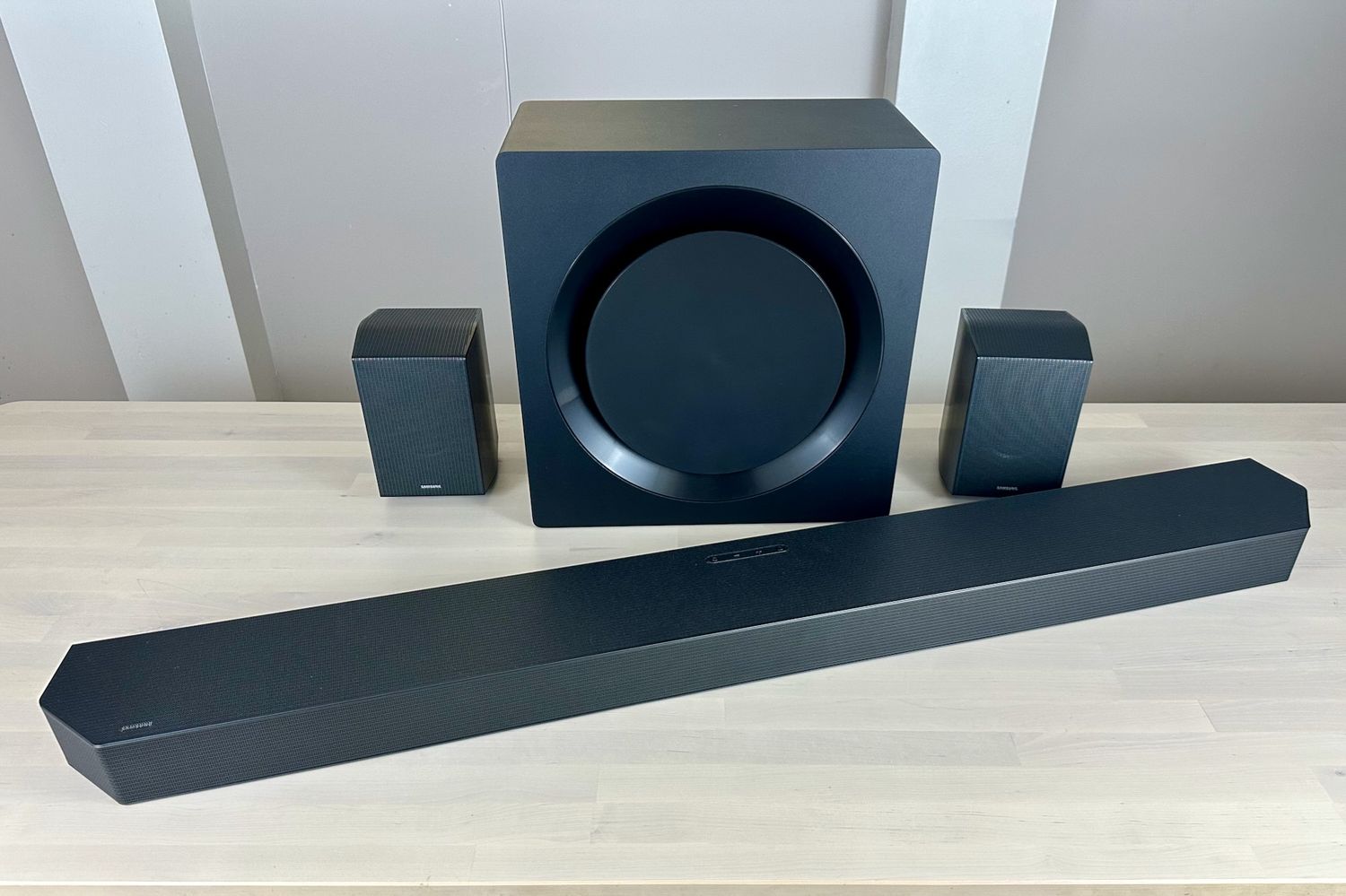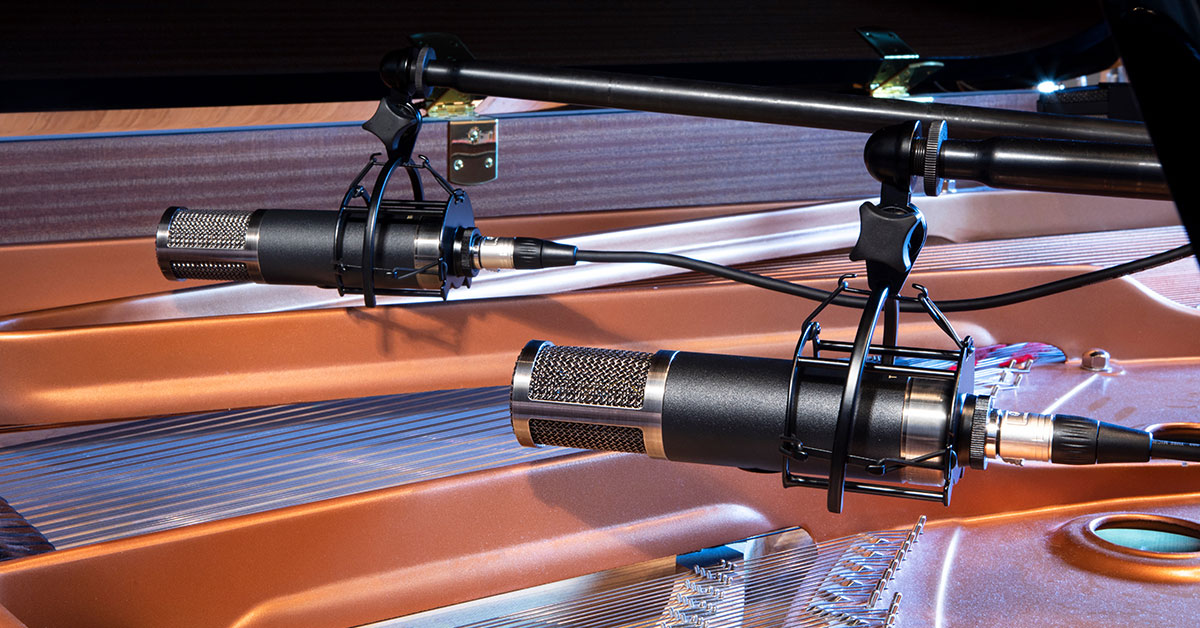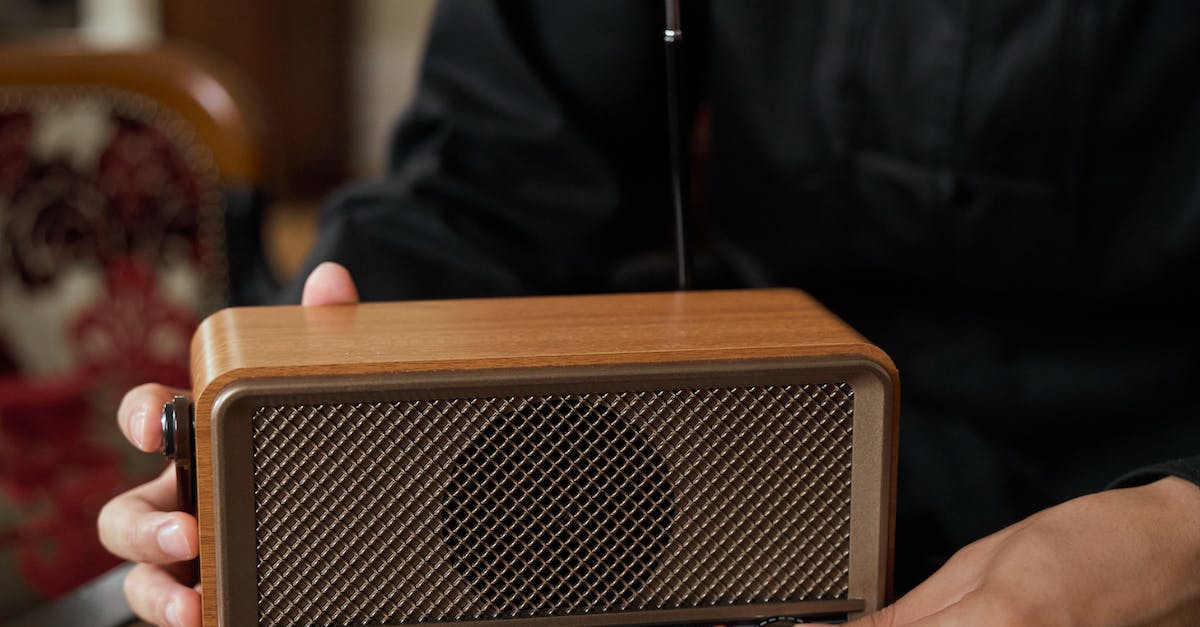Home>Devices & Equipment>Microphone>Why Does My Microphone Pick Up Desktop Audio


Microphone
Why Does My Microphone Pick Up Desktop Audio
Published: February 16, 2024
Discover why your microphone picks up desktop audio and learn how to fix it. Find solutions to prevent unwanted background noise. Get expert tips on optimizing microphone settings.
(Many of the links in this article redirect to a specific reviewed product. Your purchase of these products through affiliate links helps to generate commission for AudioLover.com, at no extra cost. Learn more)
Table of Contents
Introduction
In the realm of audio recording, capturing pristine sound is of paramount importance. However, the sensitive nature of microphones can sometimes lead to unintended consequences, such as picking up desktop audio. This phenomenon occurs when a microphone inadvertently captures the sound produced by the computer's speakers or other ambient noises in the vicinity. Understanding why this happens and how to mitigate it is crucial for achieving optimal audio quality.
When a microphone picks up desktop audio, it can result in unwanted background noise or echo in recordings, live streams, or video calls. This issue is particularly prevalent in scenarios where the microphone is in close proximity to the computer or when using open-back headphones. The sound picked up by the microphone can include anything from system alerts and notifications to music, game audio, or the voices of others during voice chats.
The prevalence of this problem has led to a growing demand for effective solutions to minimize desktop audio pickup. Whether you are a content creator, podcaster, gamer, or remote worker, understanding the factors contributing to this issue and implementing practical remedies can significantly enhance the overall audio experience.
In this article, we will delve into the intricacies of microphone sensitivity, explore the common causes of desktop audio pickup, and provide actionable solutions to mitigate this issue. By gaining a comprehensive understanding of these concepts, you will be better equipped to optimize your audio setup and elevate the quality of your recordings and communication. Let's embark on a journey to unravel the mysteries of microphone sensitivity and conquer the challenge of desktop audio pickup.
Understanding Microphone Sensitivity
Microphone sensitivity refers to the device’s ability to capture sound waves and convert them into electrical signals. This fundamental characteristic plays a pivotal role in the quality and fidelity of audio recordings. Understanding how microphone sensitivity influences the pickup of desktop audio is essential for addressing this common issue.
Microphones vary in their sensitivity levels, which are typically measured in millivolts per Pascal (mV/Pa) or decibels relative to 1 volt per Pascal (dBV/Pa). A higher sensitivity rating indicates that the microphone can capture even the faintest sounds, making it more susceptible to picking up ambient noises, including desktop audio. On the other hand, microphones with lower sensitivity ratings may be less prone to capturing extraneous sounds but could require amplification for optimal performance in certain recording environments.
Additionally, the design and construction of the microphone can influence its sensitivity to external sounds. For instance, condenser microphones, known for their high sensitivity and responsiveness, are more likely to pick up background noises compared to dynamic microphones, which are generally less sensitive. The diaphragm size, polar pattern, and frequency response of a microphone also contribute to its overall sensitivity and susceptibility to picking up desktop audio.
When a microphone picks up desktop audio, it is often a result of its high sensitivity, coupled with factors such as proximity to the sound source and the volume at which the desktop audio is playing. The sound waves emitted from the computer’s speakers or other audio output devices can easily reach the microphone, especially if they are in close proximity or share the same acoustic space. This can lead to unwanted audio bleed and compromise the clarity and intelligibility of the primary audio source being recorded or transmitted.
By comprehending the intricacies of microphone sensitivity and its impact on desktop audio pickup, individuals can make informed decisions when selecting and positioning microphones for various applications. Moreover, this knowledge empowers users to implement effective strategies for minimizing the interference caused by desktop audio, thereby enhancing the overall audio capture and communication experience.
Common Causes of Desktop Audio Pickup
Several factors contribute to the phenomenon of desktop audio pickup by microphones, often resulting in unwanted background noise and interference. Understanding these common causes is crucial for identifying and addressing the root of the issue.
1. Proximity to Audio Output Devices: When a microphone is positioned in close proximity to the computer’s speakers or other audio output devices, it is more susceptible to picking up the sound produced by these sources. The proximity exacerbates the likelihood of audio bleed, leading to the inadvertent capture of desktop audio during recordings, live streams, or voice calls.
2. Open-Back Headphones: The use of open-back headphones, which allow sound to escape from the ear cups, can contribute to desktop audio pickup. The sound leakage from the headphones can be captured by the microphone, especially in situations where the headphones and microphone are in close proximity, leading to unwanted background noise in the audio recordings.
3. High Microphone Sensitivity: Microphones with high sensitivity ratings are more prone to picking up ambient sounds, including desktop audio. The heightened sensitivity makes them more susceptible to capturing extraneous noises, particularly when positioned near audio output sources or in acoustically reflective environments.
4. Acoustic Reflection and Reverberation: The acoustic properties of the recording environment can influence the pickup of desktop audio. Reflection and reverberation of sound waves within the space can lead to the indirect capture of desktop audio by the microphone, resulting in a degraded signal-to-noise ratio and diminished audio quality.
5. System Notifications and Alerts: The audible notifications, alerts, and system sounds emitted by the computer can inadvertently be picked up by the microphone, especially in scenarios where the microphone is positioned near the computer. These sounds can introduce unwanted interruptions and background noise into the audio recordings or communication channels.
6. Volume Levels of Desktop Audio: Higher volume levels of desktop audio increase the likelihood of microphone pickup. The louder the desktop audio, the more prominent its presence becomes in the microphone’s input signal, potentially overshadowing the primary audio source and compromising the overall audio fidelity.
Identifying these common causes of desktop audio pickup empowers individuals to proactively mitigate the issue and optimize their audio setups for superior performance. By addressing these contributing factors, users can effectively minimize the interference of desktop audio, resulting in clearer, more professional audio recordings and communication experiences.
Solutions for Minimizing Desktop Audio Pickup
Addressing the challenge of desktop audio pickup by microphones requires practical solutions aimed at mitigating the interference and preserving the integrity of the primary audio source. By implementing the following strategies, individuals can effectively minimize the impact of desktop audio on their recordings, live streams, and communication channels.
1. Optimal Microphone Placement: Positioning the microphone away from the computer’s speakers and audio output devices can significantly reduce the pickup of desktop audio. Creating distance between the microphone and the sources of desktop audio minimizes the likelihood of interference, resulting in cleaner and more focused audio capture.
2. Use of Closed-Back Headphones: Utilizing closed-back headphones, which feature sealed ear cups that prevent sound leakage, can help mitigate desktop audio pickup. Unlike open-back headphones, closed-back models confine the sound within the ear cups, reducing the potential for the microphone to capture extraneous audio from the headphones.
3. Adjusting Microphone Sensitivity: If using a microphone with adjustable sensitivity settings, lowering the sensitivity can help reduce the pickup of ambient sounds, including desktop audio. By fine-tuning the microphone’s sensitivity to better suit the recording environment, users can minimize the interference caused by unintended audio pickup.
4. Acoustic Treatment of the Recording Environment: Implementing acoustic panels, sound-absorbing materials, and proper room setup can mitigate the impact of acoustic reflections and reverberations, thereby reducing the indirect pickup of desktop audio by the microphone. Creating an acoustically treated environment enhances the clarity and fidelity of the primary audio capture.
5. Sound Management and Isolation: Managing the volume levels of desktop audio and utilizing software-based solutions to isolate specific audio sources can help minimize their pickup by the microphone. By controlling the output levels and directing audio streams to specific channels, users can effectively reduce the interference of desktop audio in their recordings and communication setups.
6. Utilize Noise Suppression and Filtering Tools: Leveraging noise suppression and audio filtering tools, available in various recording and communication software, can help attenuate the pickup of background noise, including desktop audio. These tools enable users to selectively suppress unwanted audio frequencies, enhancing the clarity and intelligibility of the primary audio signal.
By implementing these practical solutions, individuals can effectively minimize the pickup of desktop audio by their microphones, resulting in cleaner, more professional audio recordings, live streams, and communication channels. These strategies empower users to optimize their audio setups and elevate the overall quality of their audio content and interactions.
Conclusion
The challenge of desktop audio pickup by microphones is a common issue that can compromise the quality and clarity of audio recordings, live streams, and communication channels. Understanding the factors contributing to this phenomenon and implementing practical solutions is essential for mitigating the interference of desktop audio and optimizing the overall audio experience.
Microphone sensitivity, proximity to audio output devices, use of open-back headphones, and environmental acoustics are among the key factors influencing the pickup of desktop audio. By comprehending these factors, individuals can proactively address the root causes of the issue and implement effective strategies to minimize interference and background noise.
Optimal microphone placement, utilization of closed-back headphones, adjustment of microphone sensitivity, acoustic treatment of the recording environment, sound management, and utilization of noise suppression and filtering tools are practical solutions that empower users to mitigate the impact of desktop audio pickup. These strategies enable individuals to preserve the integrity of the primary audio source and achieve clearer, more professional audio recordings and communication experiences.
As technology continues to evolve and the demand for high-quality audio content grows, the ability to address and overcome challenges such as desktop audio pickup becomes increasingly valuable. By leveraging a combination of technical knowledge, practical solutions, and innovative tools, individuals can elevate the standard of their audio production and communication, delivering content that captivates and engages audiences while maintaining a professional and polished sound.
In conclusion, the quest to minimize desktop audio pickup is a journey of exploration, experimentation, and adaptation. By embracing the nuances of microphone sensitivity and the intricacies of audio capture, individuals can conquer the challenge of unwanted audio interference, unlocking the full potential of their audio setups and creating content that resonates with clarity and precision.











